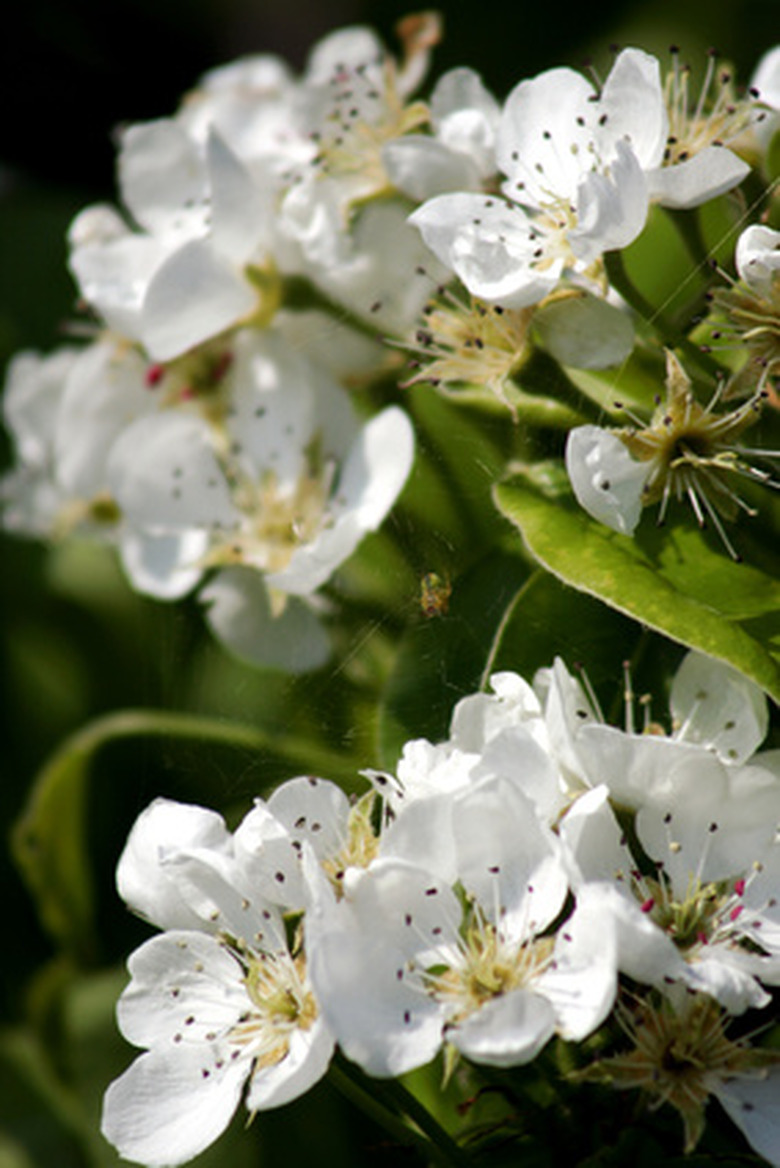Lifespan Of Cleveland Pear Trees
Ornamental pear trees put on a fantastic show of blooms each spring, have flame-orange autumn color, and an interesting branching habit to showcase during the winter. They tolerate temperatures below minus 20 degrees Fahrenheit, and grows to 35 feet high and 20 feet wide. Cleveland pears (Pyrus calleryana 'Cleveland Select' or 'Chanticleer') are favored over Bradford pears since they have fewer problems with limbs breaking during a storm or coming uprooted.
Average Lifespan
Callery ornamental pears such as Cleveland (usually tagged as Cleveland Select) are often used for urban plantings, where they are expected to have a lifespan of up to 50 years. The peak of their healthy lives is usually in the range of 35 to 40 years, as they tend to decline after this time and become susceptible to disease, limb breaking, suckering and destructive surface roots.
Problems
Trees planted in soggy soils will not live long, if at all. Exposure to frequent stormy and windy weather may distort the tree's growth and decrease longevity. Excessive fertilizing while the tree is growing will encourage it to put on heavy top growth, which may lead to problems later in life. Extreme droughts and excessive heat weaken the tree, leaving it vulnerable to disease and insect infestation that sap years of life from the tree.
- Ornamental pear trees put on a fantastic show of blooms each spring, have flame-orange autumn color, and an interesting branching habit to showcase during the winter.
- The peak of their healthy lives is usually in the range of 35 to 40 years, as they tend to decline after this time and become susceptible to disease, limb breaking, suckering and destructive surface roots.
Problem Prevention
Plant in well-drained soils far from sidewalks in full sun. The roots of Cleveland pear trees can damage or break up sidewalks and shifting concrete will damage roots and invite disease. Planting in the shade of a larger tree or right next to a multiple-story building will often cause Cleveland pears to grow lopsided. As it grows, the heavy lateral branches will leave the tree off-balance to the point of becoming a hazard in a storm. Unwind any tangled or circling roots before planting, spreading them out as much as possible in the planting hole.
Warning
The surface roots of Cleveland pears should be left alone. Cuts left by lawn mowers and weed-eaters are entry points for disease. This damage might also cause suckering, or shoots to originate from the roots. Once suckering begins, it almost never stops. Cutting away suckers will likely be a chore for the rest of the tree's life. Avoid using broad-leaf weed killers in your lawn (including products that combine weed-killers and lawn fertilizers) since these will damage or kill ornamental pears.
- Plant in well-drained soils far from sidewalks in full sun.
- Planting in the shade of a larger tree or right next to a multiple-story building will often cause Cleveland pears to grow lopsided.
Maintenance
While edible pear trees are often topped, it is not advisable to top an ornamental pear tree. Topping (or cutting the ends of the branches or all the top branches) disfigures the tree. It forces heavy growth at the very top, unbalancing the tree, weakening its structure and leaving it vulnerable to insects and breakage. Instead, thin the overall tree as it grows to keep the canopy open. Where the juncture of two branches is very close, cut one off next to the main limb so they don't compete. Irrigate deeply and infrequently during droughts to encourage the roots to grow deep.
